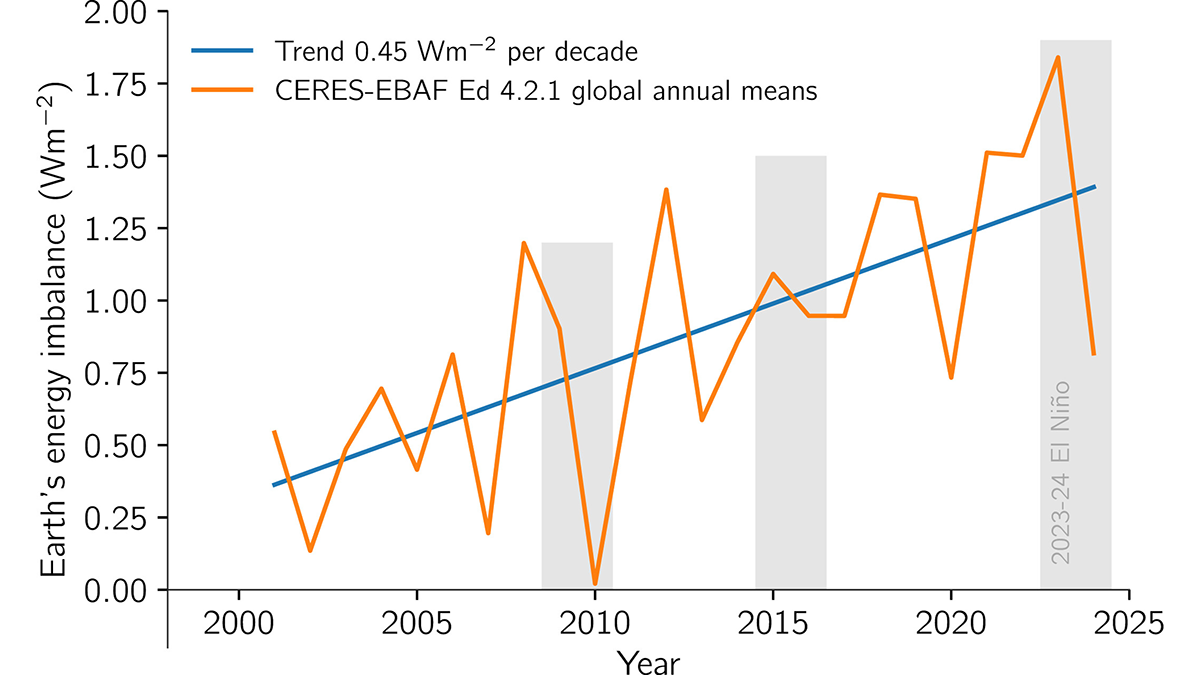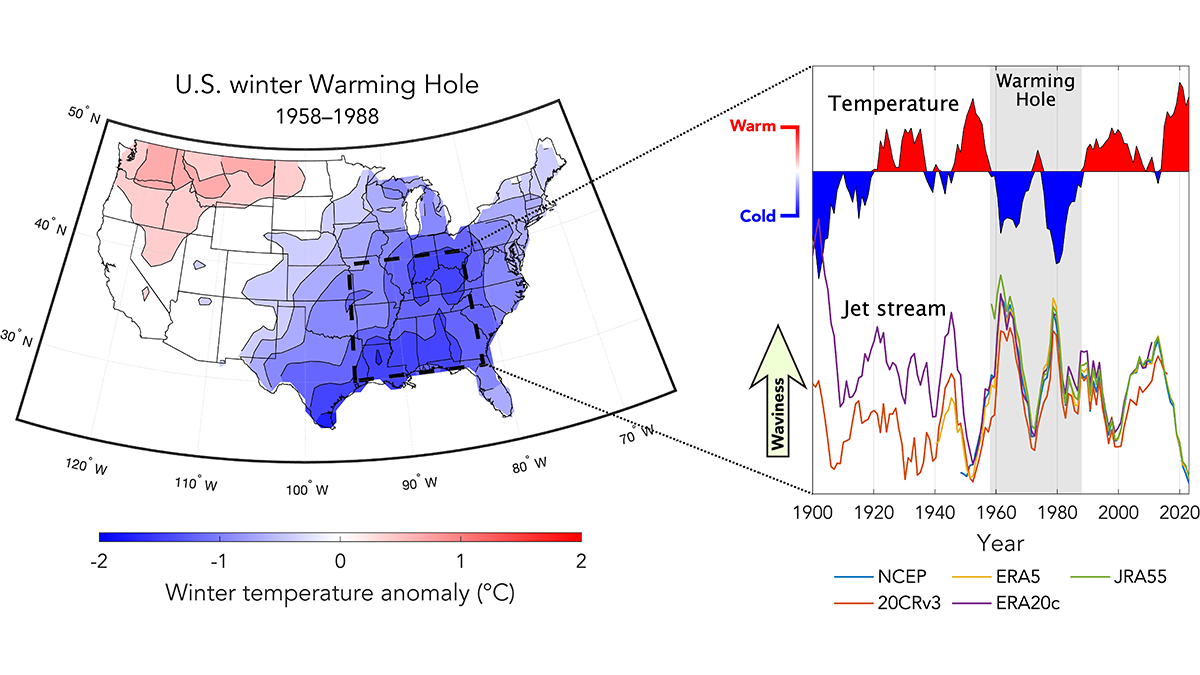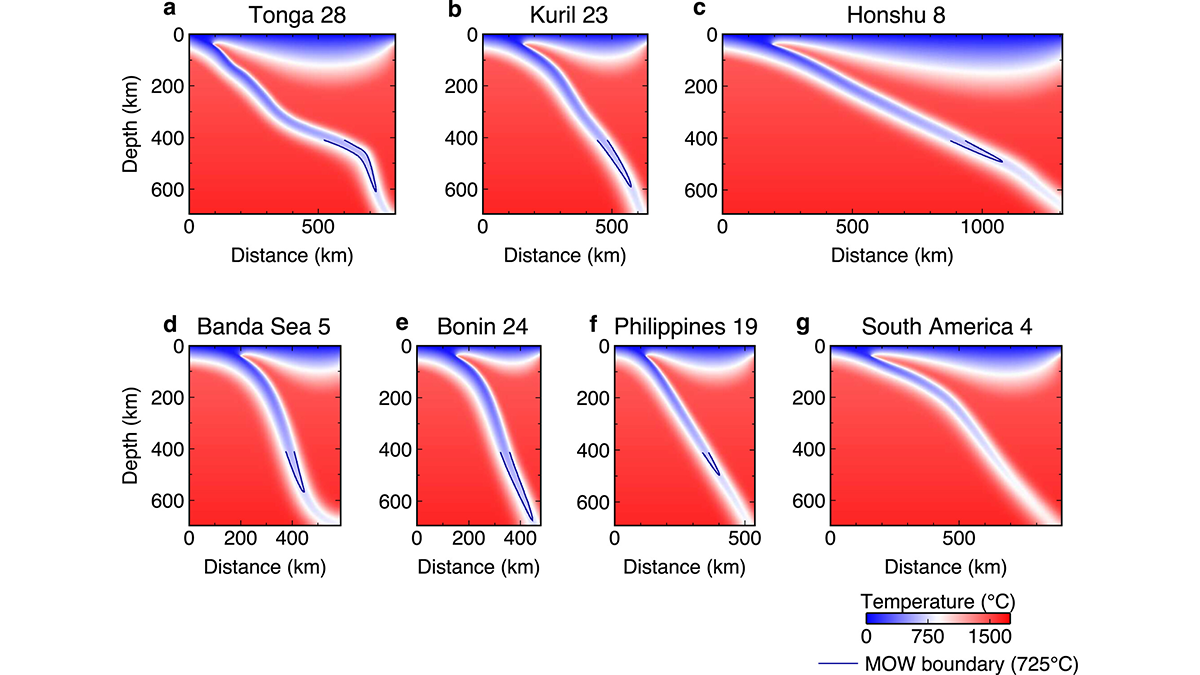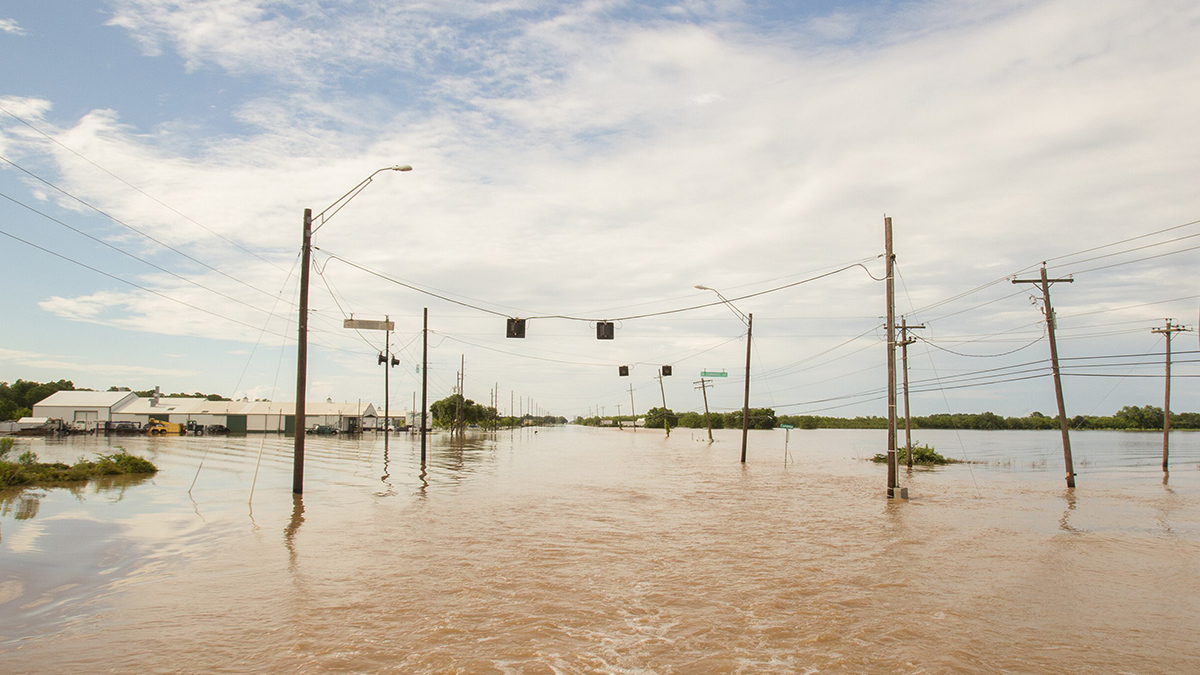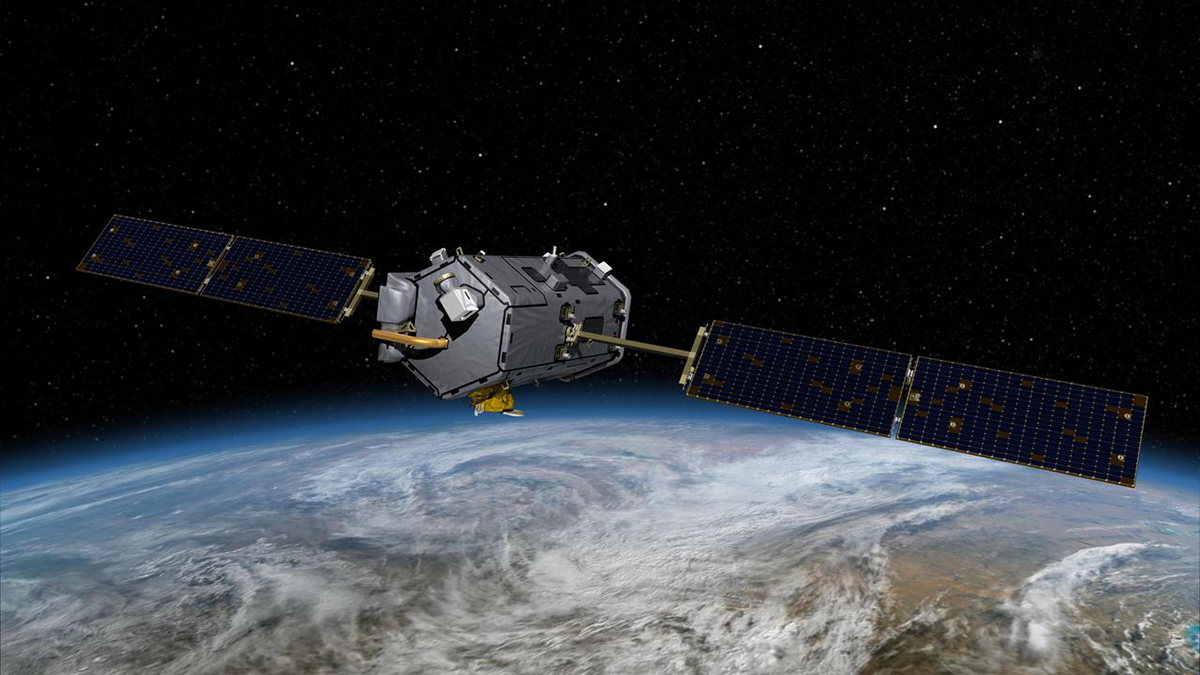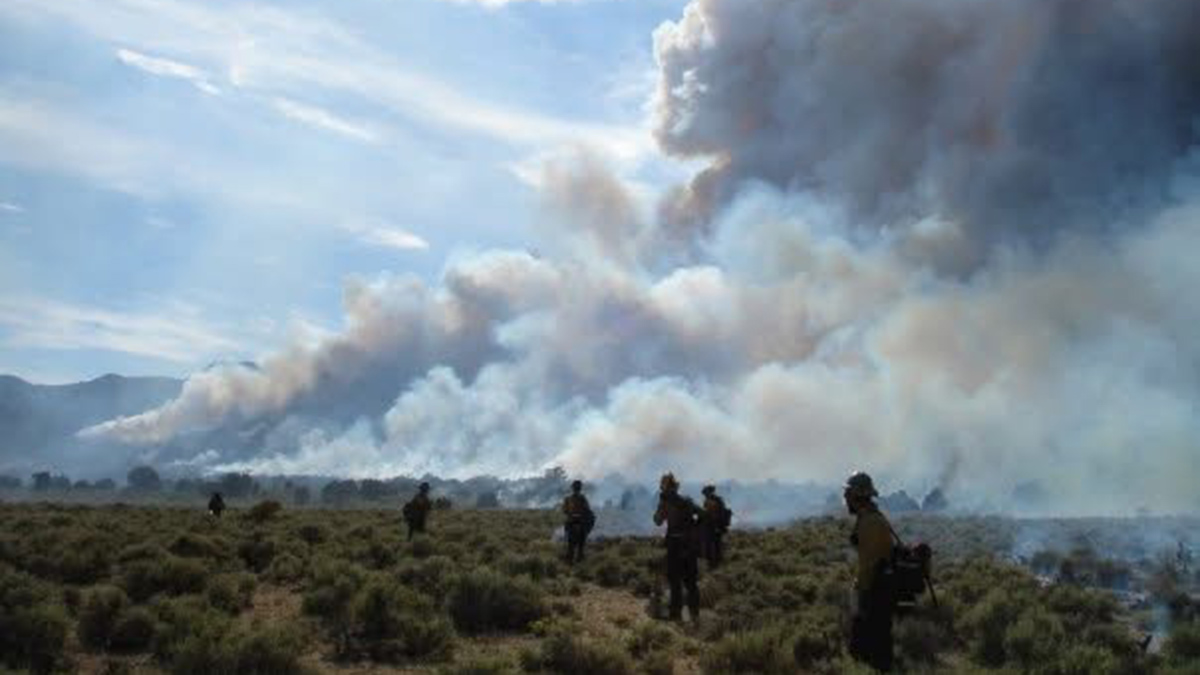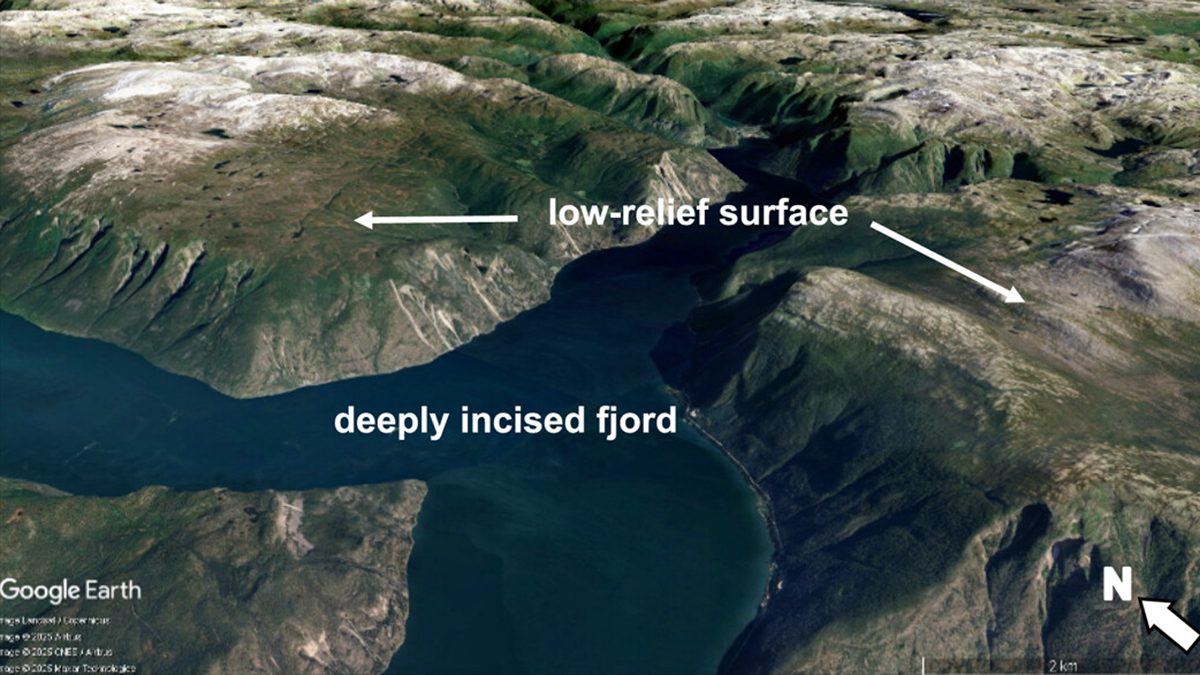Synthetic tracers are useful in defining the chemically-heterogeneous tropopause in chemical transport models, especially where more traditional gradient-based tropopause methods may be lacking.
AGU Advances
Earth’s Energy Imbalance is Growing Faster Than Expected
Satellite observation of the imbalance between incoming and outgoing radiation in the atmosphere, which causes global warming, shows growth beyond what climate models have predicted.
The Mid-20th Century Winter Cooling in the Eastern U.S. Explained
A new analysis of historical jet stream behavior reveals that increases in jet stream waviness accounted for 55-71% of winter cooling in the eastern United States from 1958 to 1988.
Deep Root Respiration Helps Break Down Rocks
The carbon dioxide that results from respiration in and around deep roots is an essential component in the chemical weathering of sandstone rock soils.
Shedding Light on the Mysteries of Deep Earthquakes
By analyzing forty deep earthquakes around the world, researchers discover the key role of a dual mechanism that allows earthquakes to grow larger and release more stress.
Científicos revelan los peligros ocultos del calor y las inundaciones en Texas
Una parte más amplia del “Estado de la Estrella Solitaria” podría verse afectada por más olas de calor e inundaciones de lo que sugieren registros previos.
What’s Changed—and What Hasn’t—Since the EPA’s Endangerment Finding
A scientist-authored brief played a role in the 2009 determination that greenhouse gases endanger public health. With the finding now up for reconsideration, the same scientists revisit their opinion.
Coverage Factors Affect Urban CO2 Monitoring from Space
Orbital mechanics and environmental factors limiting the ability of Orbiting Carbon Observatory missions to collect data in space and time affect city-level monitoring, reporting, and verification goals.
The Goldilocks Conditions for Wildfires
Twenty years of data from around the world show that areas that are not too dry and not too wet are most conducive to wildfire burning.
High Relief, Low Relief — Glaciers Do It All
Contrary to conventional wisdom that glaciers just carve landscapes, they can also form low-relief surfaces by sheltering rock from erosion, enriching understanding of how mountain landscapes evolve.


